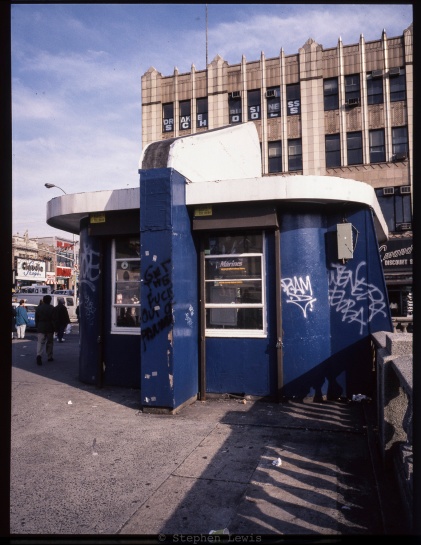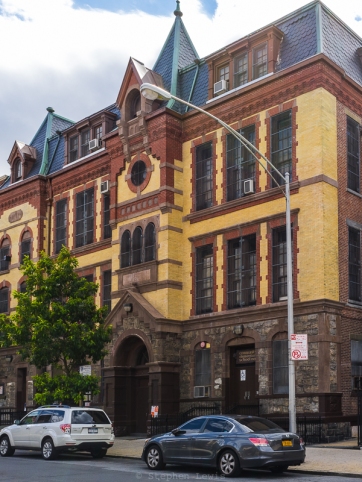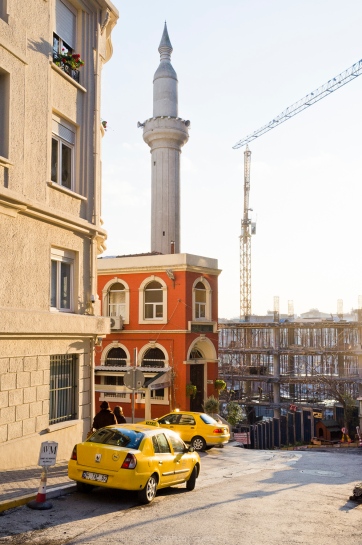
Two images of non-monumental structures, each with monumental tales to tell…
Both photos were taken in the late-1980s on 6×4.5cm transparency film using a light-weight, fixed-lens, wide-angle (28mm-equivalent) Fuji roll-film camera which featured manual focusing by estimation of distance and depth-of-field and a very accurate built-in manual light meter, so accurate, that when using it, I almost never bracketed exposures, not even when the camera was loaded with low-dynamic-range, transparency film. I miss the camera and I miss the 3:4 format ratio of its output.
Above: The one-time Corfu Diner on 10th Avenue and West 18th Street in lower Manhattan, a stereotypical Greek-owned, railway-car inspired diner, and a hangover from a past age when the Hudson River docks still flourished and provided work and ample venues for heavy-eating and hard-drinking to stevedores, truckers, warehouse workers, and others. I haven’t walked down lower 10th Avenue for many years and have no idea if the Corfu Diner still stands, whether vacant or open in a new incarnation. Any updates are welcome, thus. (Note the slogan on the orange-painted truck parked to the background at the left side of the photo: “Schleppers, Moving Storage, Never a No Show.” The 1980s saw the rise of independent non-unionized moving companies in New York. Many, like Schleppers — Yiddish for “draggers” or “carriers” — and Moishe’s were owned by recently arrived Israelis, legal and illegal, and staffed by their compatriots, mostly young, strong, and well pumped-up for long hours of lifting and carrying with liberal rations of cocaine. Other independent movers provided women with entree into this formerly all-male domain. The memorable name of one of the first such company: Mother-Truckers!)
Below: The last of several World-War-II-era US military recruiting booths (this one, if I am correct, originally built for the Navy, per its streamlined art deco take on the bridge and stack of a ship, and later transferred to the Marines) that stood on the Fordham Road overpass spanning the Grand Concourse in the Bronx. (In the background, the Wagner Building, a 1930s office block, one of a piece with the many great art deco apartment and commercial buildings that line the Concourse from 161st St. northward). From the early-1940s on, generations of neighborhood young people — Jews, Germans, Italians, Poles, and Irish, followed by Puerto Ricans, Dominicans, and African-Americans — volunteered at this and the other booths to fight America’s wars, just and cynical, against enemies real and invented. Some volunteered out of idealism and others for adventure, to avoid prison, or to escape into the larger world and begin life anew. Many returned alive, be it unscathed or maimed; many others, however, had their lives cut short.





